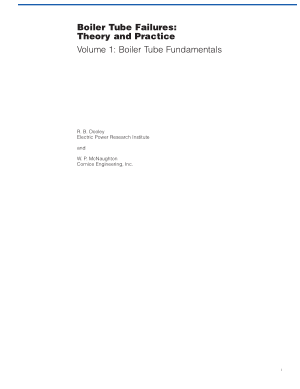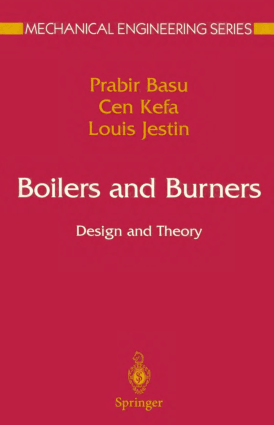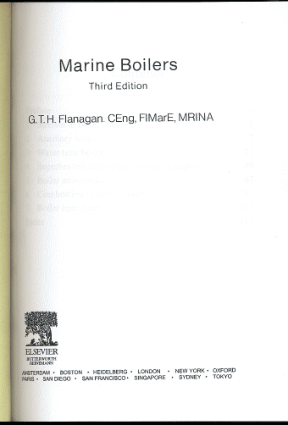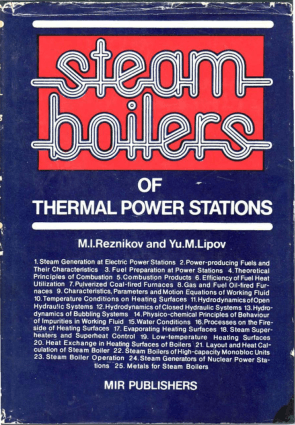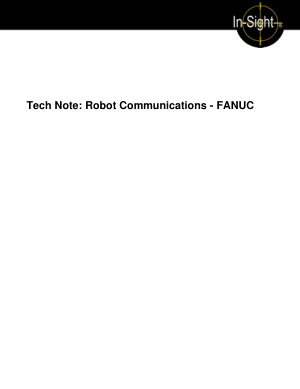Table of Contents Volume 1: Boiler Tube Fundamentals
Chapter Page
Acknowledgments iii
Preface iv
Table of Contents vi
1 Introduction and Background 1-1
1.1 Introductory Comments 1-1
1.2 Objectives of this Book 1-2
1.3 Organization of this Book and How to Use It 1-3
1.4 Introduction to the Water-Steam Cycle and Primary Components
in Conventional Fossil-Fuel Power Plants 1-16
1.5 Historical Developments in the Identification, Correction,
and Prevention of BTF 1-16
1.6 Recent Developments in the Identification, Correction
and Prevention of BTF 1-19
1.7 Today’s Situation and Challenges that Remain 1-20
1.8 References 1-22
2 The Boiler Tube Operating Environment and Its Breakdown 2-1
2.1 Introduction 2-1
2.2 Basic Function and General Design Considerations 2-2
2.3 The Reaction of Iron and Water/Steam: Oxide Formation 2-6
2.4 Oxide Development and Breakdown in Water-Touched Tubes 2-8
2.5 Overview of Thermal-Hydraulic Regimes and Waterside BTF 2-12
2.6 Oxide Development and Breakdown in Steam-Touched Tubes 2-14
2.7 The Combustion Process, Coal Effects and Fireside BTF 2-21
2.8 References 2-25
3 Cycle Chemistry and Boiler Tube Failures 3-1
3.1 Introduction and Significance of the Challenge 3-1
3.2 Boiler Water Treatment 3-3
3.3 Feedwater Treatment 3-8
3.4 Developing Unit-Specific Guidelines 3-12
3.5 Instrumentation and Monitoring for Boiler Water 3-14
3.6 References 3-15
4 The Effects of Unit and Boiler Operation and Maintenance on BTF 4-1
4.1 Introduction and Background 4-1
4.2 Chemical Cleaning of Waterwalls 4-1
4.3 Chemical Cleaning of Superheaters/Reheaters 4-5
4.4 Chemical Cleaning in FBC Units 4-8
4.5 Start-Up, Shutdown, Cycling, and Unit Transients 4-8
4.6 Lay-Up 4-9
4.7 Commissioning 4-9
4.8 References 4-12
5 Company-Wide Programs for the Correction, Prevention
and Control of Boiler Tube Failures 5-1
5.1 Introduction 5-1
5.2 Formalizing a Program for Correction, Prevention and Control 5-1
5.3 Does It Work? Results from Field Application 5-3
5.4 References 5-6
6 Metallurgical Analysis 6-1
6.1 The Role of Metallurgical Analysis for
Analyzing Boiler Tube Failures 6-1
6.2-6.19 Step-by-Step Guide to Metallurgical Analysis 6-3
6.20 References 6-10
7 Distinguishing Features of Some Mechanisms
with Similar Appearances 7-1
7.1 Introduction 7-1
7.2 Waterside Underdeposit Corrosion Mechanisms: Hydrogen
Damage, Caustic Gouging, and Acid Phosphate Corrosion 7-1
7.3 Water-Touched Tubing: Short-Term Overheating (Three Grades) 7-5
7.4 Water-Touched Tubing: Corrosion Fatigue Versus
OD-Initiated Mechanical Fatigue 7-6
7.5 Failure Mechanisms in Economizer Inlet Header Tubes: Thermal
Fatigue, Erosion-Corrosion, and Flexibility-Induced Cracking 7-6
7.6 SH Tubing: Long-Term Overheating (Creep)
Versus Fireside Corrosion 7-6
7.7 SH/RH Tubing: Flyash Erosion Versus Sootblower Erosion 7-9
7.8 SH/RH Tubing: Graphitization
and Long-Term Overheating (Creep) 7-9
7.9 SH/RH Tubing: Intergranular Stress Corrosion Cracking (IGSCC),
Intergranular Creep, and Intergranular Corrosion 7-10
7.10 Secondary (Steam Impingement) Versus Primary Failures 7-11
7.11 References 7-11
8 Boiler Tube Remaining Life Assessment 8-1
8.1 Introduction 8-1
8.2 Assessment for Tubes Operating in the Creep Regime 8-1
8.3 Assessment for Tubes Operating in the Non-Creep Regime 8-7
8.4 References 8-8
9 Determining the Extent of Macroscopic Damage:
Overview of Inspection Methods, Monitoring, and Sampling 9-1
9.1 Introduction 9-1
9.2 Codes and Standards 9-3
9.3 Ultrasonic Testing (UT) 9-3
9.4 Other Standard Inspection Methods 9-7
9.5 Monitoring Temperatures 9-8
9.6 Monitoring Heat Flux 9-9
9.7 Monitoring Displacements and Strains 9-10
9.8 Sampling 9-10
9.9 Hydrostatic Testing 9-10
9.10 References 9-11
Table of Contents Volume 1: Boiler Tube Fundamentals (continued)
10 Determining the Extent of Microstructural Damage 10-1
10.1 Introduction 10-1
10.2 Microstructural Changes in Ferritic Materials 10-2
10.3 Microstructural Changes in Austenitic Stainless Steels 10-4
10.4 Assessment of Creep Damage in Boiler Tube Materials 10-5
10.5 Post-Exposure Testing 10-6
10.6 References 10-8
11 Repair and Replacement of Boiler Tubes 11-1
11.1 Introduction 11-1
11.2 General Strategies for Damaged Tubes 11-1
11.3 Pre-Repair: Confirm Materials to be Repaired 11-3
11.4 Applicable Codes for Weld Repairs 11-3
11.5 Specific Repair Procedures 11-4
11.6 Documentation 11-7
11.7 Welding Co-Extruded Tubing 11-7
11.8 References 11-8
Index I-1
